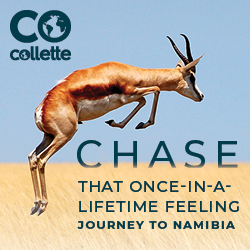The artisan landscape in the Grand Central region is looking brighter than ever, and artists are throwing open studio doors to bring groups in for a visit.
In addition to long-standing communities like Little Sweden in Kansas and Mountain View in Arkansas, new artisan communities are forming in unexpected locations like a vintage resort town in Oklahoma and the dilapidated north side of Kansas’ capital city. Even up-and-coming artists invite groups to watch as they practice their crafts at College of the Ozarks in Missouri.
Lindsborg, Kansas
Popularly known as Little Sweden, Lindsborg has been a thriving arts community since Swedish immigrants settled there in 1869. The charming town of 3,500 is one of the eight wonders of Kansas.
Swedish Dala horse sculptures scattered around town serve as the Lindsborg welcoming committee, and they make the perfect photo opportunity for groups that spend the day exploring galleries and museums and sampling Swedish cuisine.
A good starting spot is the Birger Sandzén Memorial Gallery on the Bethany College Campus. The gallery has more than 10,000 works, including Birger Sandzén’s famous landscapes, as well as several pieces from local and national artists. Tour guides tell the story of how the Swedish artist made Lindsborg a community of firsts. In 1899 Sandzén and his friends hosted the first Midwest Art Exhibition, which continues today.
Cori Sherman North, curator for the gallery, said part of Sandzén’s legacy is weaving art into the very fabric of Lindsborg culture.
“The most amazing thing is that the artists around here are completely enmeshed in the community. They are the community — they’re not separate in any way,” she said. “Children grow up just having art as a part of their everyday regular lives, and that’s how Sandzén wanted it. Even our banks are filled with local art.”
Downtown Lindsborg is lined with several galleries as well as a Swedish craft gallery, where guests can tour the workshop and watch the craftsmen build clocks, chiming door-harps and other Scandinavian knickknacks.
Another group favorite is the Red Barn Studio, which was the working studio for the late Lester Raymer, considered the Picasso of the Plains. The Red Barn Studio is filled with Raymer’s prolific art and handiwork from nearly every artistic genre. Farther up Main Street, groups can meet National Geographic photographer Jim Richardson at his Small World Gallery, where he exhibits his greatest work. Small World also displays fascinating jewelry created with unusual materials that his wife, Kathy, finds during their travels around the globe.
Medicine Park, Oklahoma
Built as a planned resort within the Wichita Mountains more than 100 years ago, Medicine Park is a tiny town along the banks of Medicine Creek. The perfect rows of homes were constructed with red granite cobblestones formed in the mountains.
With a landscape more reminiscent of Colorado than Oklahoma, Medicine Park stands at the entrance to Wichita Mountains Wildlife Refuge, where the free-roaming bison, longhorns, elk and prairie dogs far outnumber the town’s population of 400.
Despite its size, the town supports a surprising number of local artists who are experiencing a revival of sorts with new galleries and artisan shops to prove it. Artist Jean Schucker, whose own back door heads into the refuge, recently helped open Red Door Gallery in a creek-side cobblestone shop. The gallery showcases work by more than 60 local artists.
“We focus on art from Southwest Oklahoma,” Schucker said. “We have a lot of artists who live here in Medicine Park, and several of our artists come from Lawton, our big neighbor.”
Just down the street is Kathy’s Caravan, another cobblestone-and-mortar store, filled to the brim with artisan beads and jewelry. Owner Kathy Freeman is happy to give group tutorials on beading jewelry. Another haunt for local artists is the Branded Bear, which specializes in handmade Native American jewelry, pottery and artifacts from 20 separate tribes, including a few from Oklahoma.
A few doors down, groups can gather to watch artist Mary Wunderlich paint cards and stationery in her quaint little shop, Mew and Company. In addition to her work, Wunderlich showcases handmade accessories, prints, children’s essentials and home goods from artisans with a fresh, happy style like her own.
“Until recently, our local artists were showing only occasionally, but we’re raising the level of art appreciation,” Schucker said. “It’s not so much for business as it is for pleasure.”









